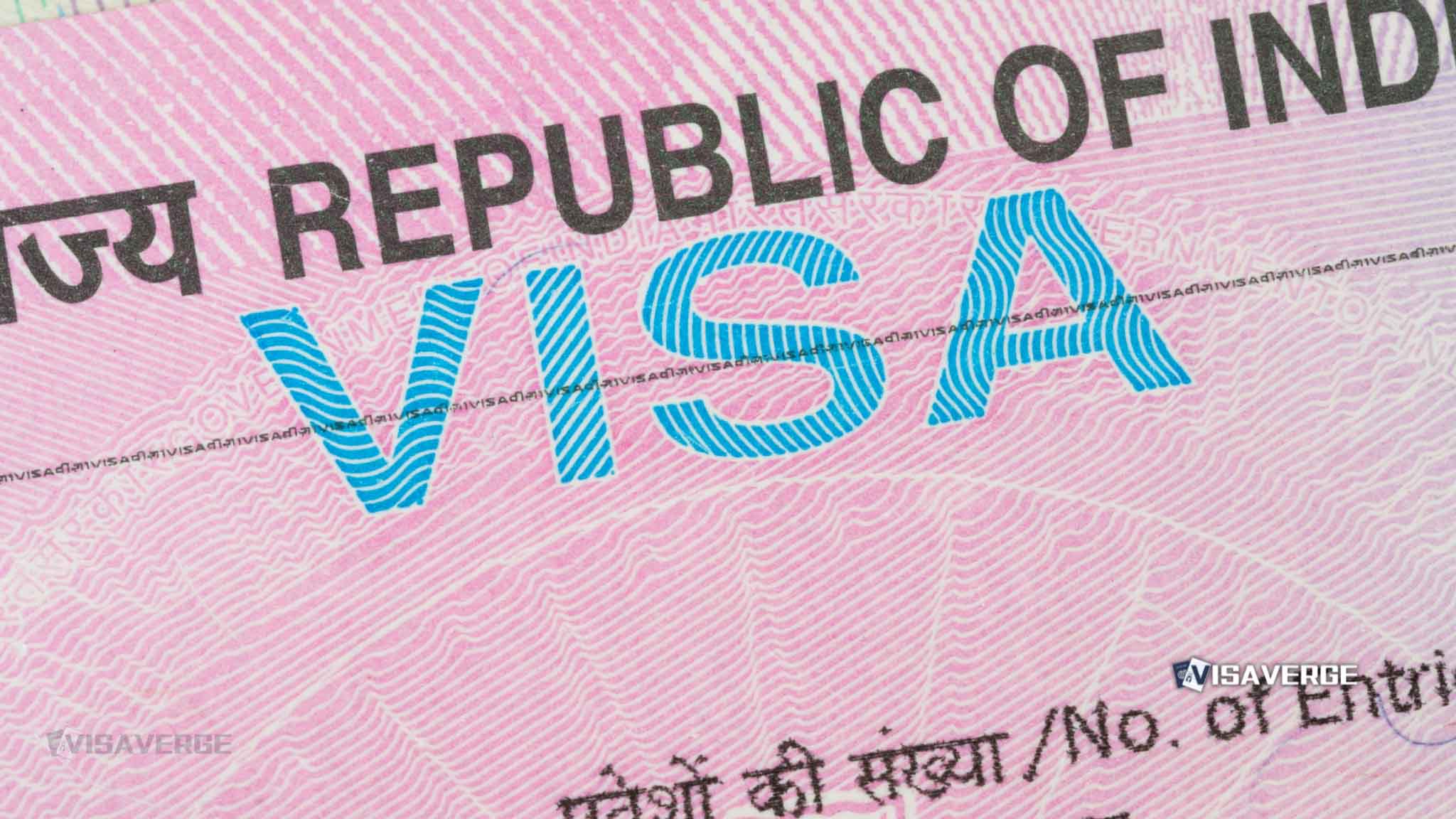(INDIA) H-1B visa issuances, H4 visas, and F-1 student visas for Indian nationals have fallen by more than 30% since 2023, marking a sharp reset in one of the busiest U.S. visa corridors. The latest counts show H-1B visa issuances dropping from 99,938 in 2023 to 63,323 in 2025, H4 visas falling from 71,130 to 46,982, and F-1 student visas sliding from 17,761 to 11,484 over the same period.
The student category has been hit hardest: the first half of 2025 saw a 44% decline in F-1 issuances compared to 2024, even as India continues to be the top source country for U.S. student visas.

Key trends and numbers
- H-1B issuances: 99,938 (2023) → 63,323 (2025)
- H4 visas: 71,130 (2023) → 46,982 (2025)
- F-1 student visas: 17,761 (2023) → 11,484 (2025)
- B1/B2 visitor visas: 370,000 (2023) → 460,000 (2025) — an increase despite declines in work and student categories
The divergence between visitor and employment/student visas suggests travelers with flexible timelines found booking windows, while work and study applicants faced stricter gatekeeping and timed bottlenecks.
Policy factors and operational constraints
Several operational and policy pressures have been tied to the downturn:
- Increased scrutiny
- Consular officers have ramped up social media screening and immigration fraud checks.
- These extra reviews add time and can delay final decisions, particularly for complex employment-based cases.
- Longer processing times and limited appointment slots
- Applicants report fewer appointment windows and longer queues.
- When combined with heightened reviews, case clearance times increase.
- Interview pause
- A planned four-week pause in visa interviews starting May 27, 2025 removed a month of capacity and pushed thousands of applicants into later months.
- Policy uncertainty and travel limits
- These pressures have weighed most heavily on F-1 student visas, where fixed academic start dates make delays particularly damaging.
U.S. Mission response
- In 2024, the U.S. Mission to India piloted a domestic renewal option for some H-1B holders, allowing renewal inside the United States rather than requiring travel back to India for stamping.
- That step aimed to keep specialty occupation workers on the job without international trips that might collide with limited consular capacity.
- Despite this pilot, overall H-1B issuances to Indian nationals fell by more than a third between 2023 and 2025.
Impact on applicants and employers
Families and dependents (H4)
- The drop in H4 visas from 71,130 to 46,982 since 2023 has direct effects:
- Longer family separations and disrupted schooling for children.
- Extra travel costs and scheduling mismatches when principal workers arrive earlier than dependents.
- Dependents may wait months for the next available appointment.
Students (F-1)
- The 44% decline in F-1 visas in H1 2025 versus H1 2024 coincides with peak summer interview booking for fall intakes.
- Timing is critical: late interviews can force students to defer admission, lose housing or scholarship arrangements, or choose alternate destinations.
- Consequences include strained budgets, housing issues, and disrupted academic plans.
Employers (H-1B)
- Reduced H-1B issuances create gaps in hiring, project timelines, and onboarding.
- The domestic renewal pilot helped some returning workers avoid travel delays, but first-time approvals remain essential for new hires.
- Companies may respond by shifting work across locations, delaying offers, or building buffer times in project planning.
Visitors (B1/B2)
- Growth in B1/B2 issuances shows sustained demand for short-stay business and tourism travel.
- Business visitors continue to facilitate meetings, training, and partnerships, maintaining ties between U.S. and Indian firms despite slower employment-based flows.
How applicants are adapting
Common strategies under tighter conditions include:
- Booking interviews as soon as slots open and monitoring cancellations for earlier dates.
- Preparing extra documentation to pre-empt officer questions (especially for employment roles and proof of student funding).
- Allowing greater lead time between admission/job offer and intended travel to account for pauses or extended reviews.
Practical considerations and advice
- Timing often matters more than just approval: start dates, leases, school terms, and spouse career moves all depend on when a visa is issued, not only if.
- Employers should consider planning buffers and staggered start dates to reduce project risk.
- Students should act early on funding proofs, SEVIS steps, and interview scheduling during busy seasons.
For official guidance on visas, appointment procedures, and consular operations in India, consult the U.S. Mission’s site at the U.S. Embassy & Consulates in India – Visas.
Context and outlook
- The embassy’s tighter screening targets fraud risks and program integrity — long-standing concerns that produce additional checks and slower processing.
- Staffing and security procedures limit the ability to scale appointments quickly, so short-term pauses like the May 27, 2025 break can reverberate for months.
- VisaVerge.com notes that India remains the top pipeline for U.S.-bound students, indicating long-term demand that could rebound once appointment supply and processing predictability improve.
For now, the data show a clear realignment: fewer approvals in work and study, more approvals in short-term travel, and tighter review across the board. Timing, not just outcome, has become the defining variable for families, students, and employers.
Frequently Asked Questions
This Article in a Nutshell
Between 2023 and 2025, U.S. visa issuances to Indian nationals saw significant declines: H-1B approvals dropped from 99,938 to 63,323, H4 visas from 71,130 to 46,982, and F-1 student visas from 17,761 to 11,484. The first half of 2025 experienced a 44% fall in F-1s compared with H1 2024. Contributing factors include increased scrutiny such as social-media checks, longer processing times due to limited appointment slots, and a four-week interview pause starting May 27, 2025. The U.S. Mission piloted domestic H-1B renewals in 2024 to reduce travel-related delays, but first-time H-1B approvals remain constrained. Impacts include family separation for H4 dependents, deferred student admissions, and hiring disruptions for employers. Applicants are advised to book early, prepare comprehensive documentation, and allow additional lead time. Visitor B1/B2 visas rose, reflecting persistent short-term travel demand despite tighter work and study pathways.













